If you and your team have learned how to create jobs, you’ll get a lot of them in your system quickly! The Dashboard, the place that lists all open jobs, will start to look something like this:

There’s a few things you’ll need to understand to get the most use out of the dashboard.
Views
The dashboard comes preprogrammed with views on the left hand side. There are “standard views” that Fyxt provides for you. There are “custom views” that you can create yourself.
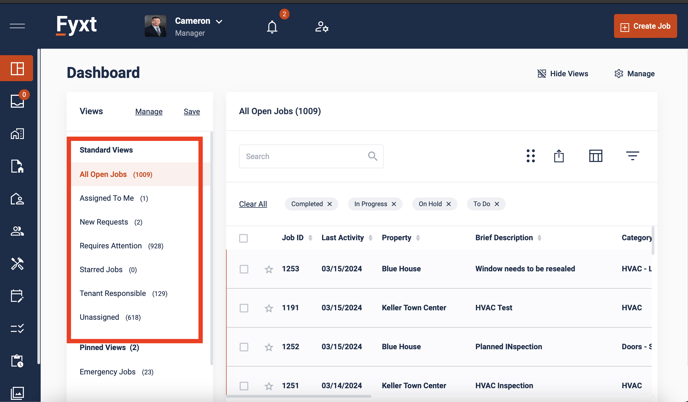
If you’re looking at the dashboard and you don’t see any views, try clicking the button in the upper right called “show views.”

The standard views Fyxt comes with each have their own purposes:

All Open Jobs shows any job you’re allowed to see that isn’t in the “closed Status.”
Assigned to Me Shows jobs that have been assigned specifically to you to work on.
New Requests shows any job requests submitted by people outside your team, such as tenants using an external form or their tenant portal log in. You may need to triage and approve them before they become normal open jobs.
Requires Attention are jobs that do not have an engineer to work on them. You can get jobs out of this view by assigning an engineer or marking “no engineer needed.”
Starred Jobs are extremely important jobs that need to be quickly accessed. More on this later!
Tenant Responsible jobs have lease information that say the tenant needs to perform the work or at least pay for the work being done in the job.
Unassigned jobs have no manager assigned so no one is officially in charge of it yet.
Starred Jobs
To the left of every job on any dashboard view is the star button:

If you click on it, the job becomes “starred” and now will appear in the view “starred jobs.”

Unseen Jobs
A job that has had any activity performed on it by someone else is highlighted bold to show it is unseen by you:

If you click into the job to check the latest updates, the bold emphasis is removed:

When you are inside a job, you can use the “actions” menu to mark it unseen again so you remember to check on it later:
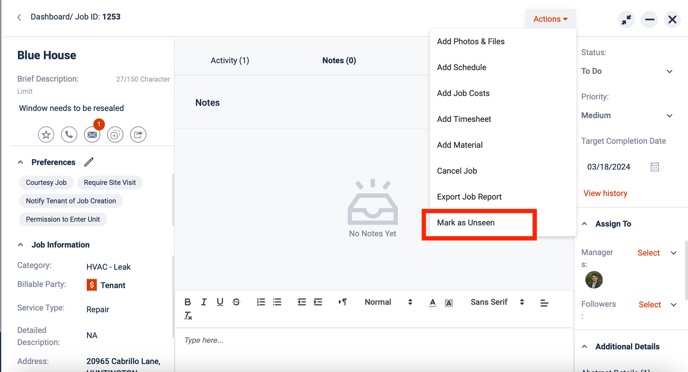
Status and Priority
There are many columns on the jobs table, and you can even customize them! There are two columns that are very important to help you work on a big list of jobs: Status and Priority.
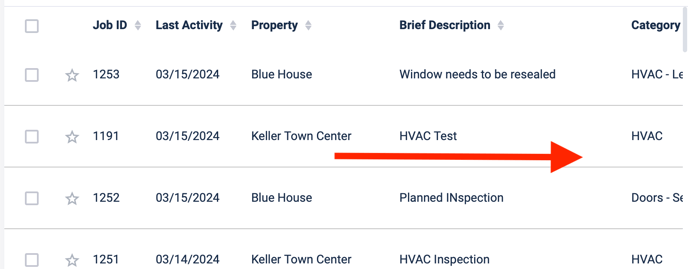
Depending on how the columns are ordered on your table, you may have to scroll left to find Status and Priority. Once you find these columns, it's important to note that you can edit them without having to click into the job! Just click on the arrow next to them.
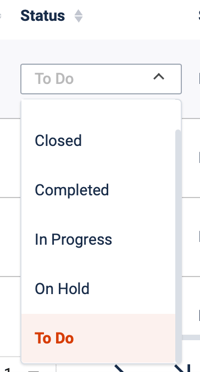
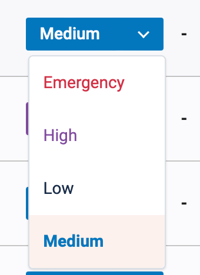
Actions
Another column on the jobs table that is important is Actions.
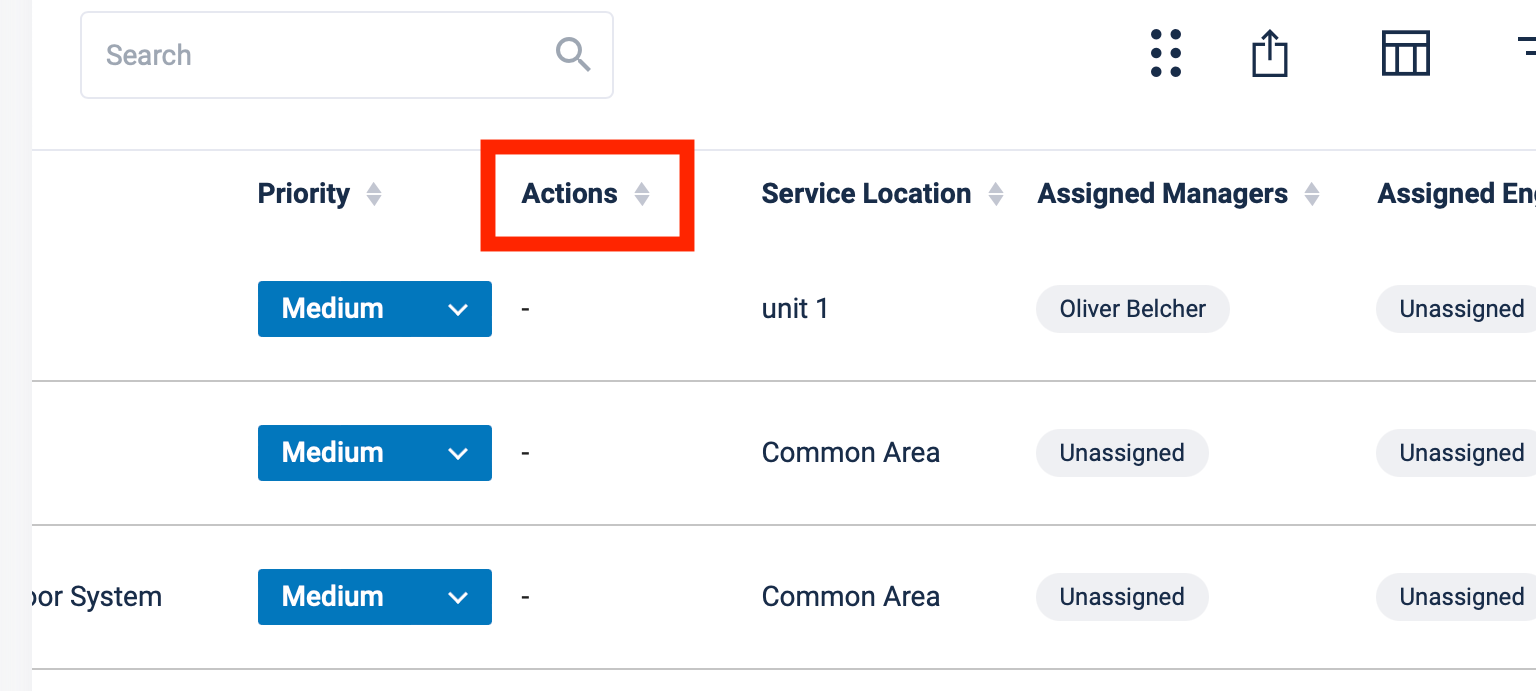
By default, the actions column appears next to priority, and will often be blank. However, if any one other than you performs an action that requires your approval, an icon will appear in the actions column:

The example above is for when a vendor submits a bid or invoice that needs to be processed. All the events that will be tracked in the actions column are:
-
A vendor submits a bid or invoice
-
A vendor suggests a schedule for service
-
A team member submits a materials or timesheet that needs approval
-
A tenant user suggests a schedule for a service
- New Notes are added
Filters
Filters is the way you truly unlock the power of the dashboard. Different jobs in different states require different attention! You can update your table to only show you the kind of jobs you want to see right now by clicking on the filters icon:

This will open the list of filters to the right. There are tons of values you can filter for!
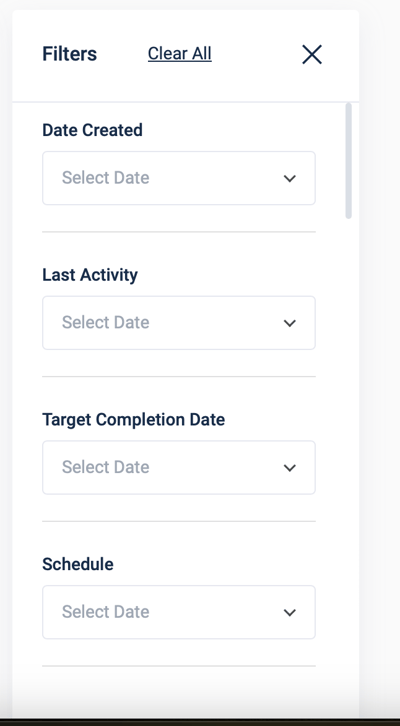
Date Created: select a date or range and see only jobs originating from that time.
Last activity: select a date or range and only see jobs with new activity within that time.
Target Completion Date: Try to plan ahead and see jobs that are due on specific dates.
Schedule: See what jobs have site visits planned for engineers or vendors by filtering the schedules' date rangers.

Job Cost Date Approved: If a bid or invoice was approved for a job on a certain date, you can find it with this filter.
Job Cost Amount: If certain ranges of costs are important to look for and work on, use this filter.
Status: This is a multiple select filter where you can only view jobs in the work status that matters to you, such as to do or work completed. Closed status jobs are not shown on the dashboard table, but all others can be shown.
Priority: Only want to see emergency jobs? Or are you on top of those and want to work on the medium priority jobs? Filter one or more priority values here.
Tenant: Only want to see jobs involving a specific tenant? Or a group of tenants? Use this filter.
There are many more filters available! And whenever you make a custom group of filters that’s perfect for you, consider saving it as a view!
Bulk Actions
If you’ve filtered your table to show you the only jobs that matter to you, you might want to take the same action on all of them at the same time. To do this, click the checkbox next to them (or the one at the top of the table to select all). This will reveal the bulk actions menu:
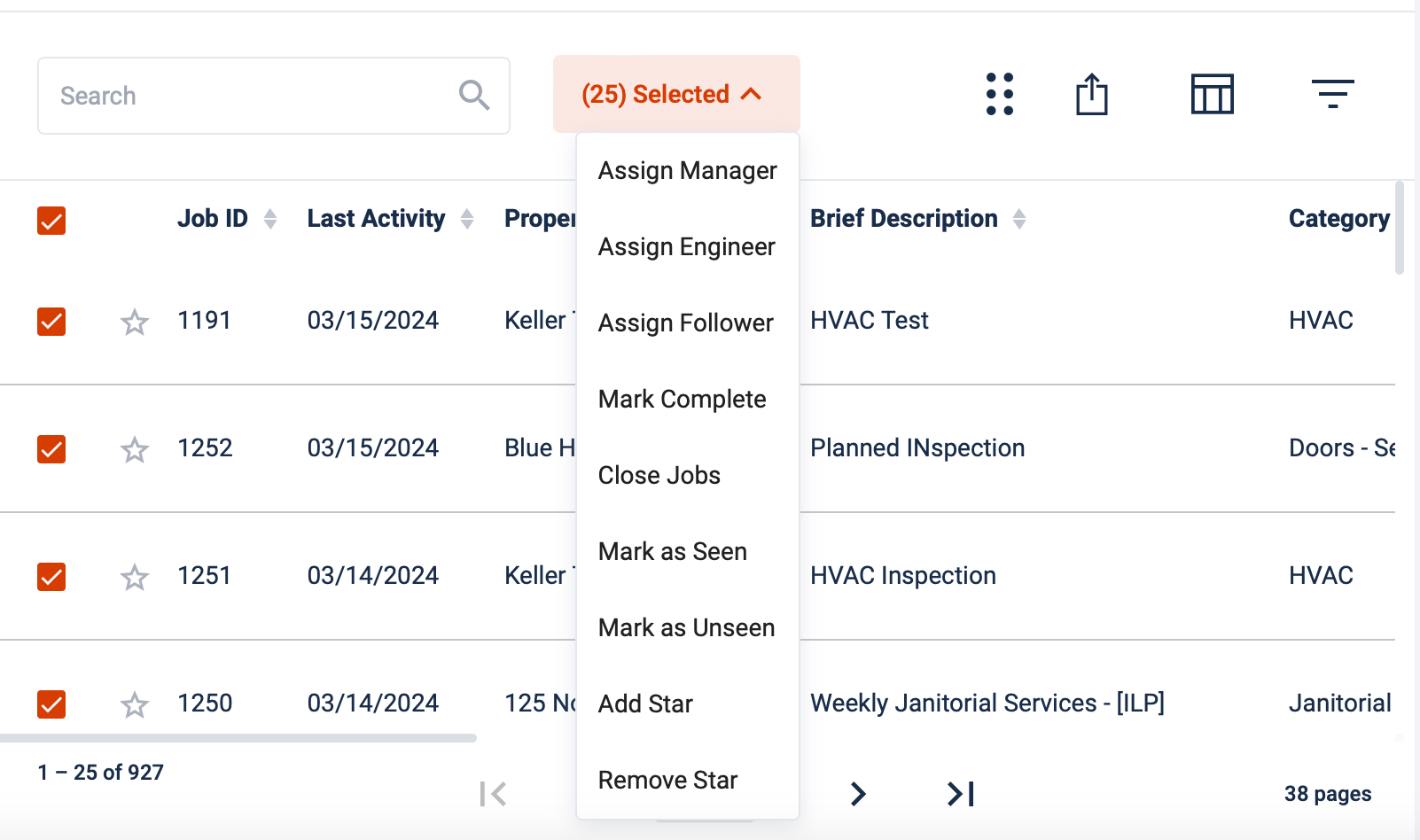
All of these actions are from different important parts of a job, such as team assignment, changing status, changing seen/unseen, or starring.
